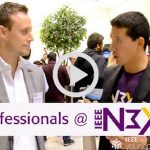From IEEE The Institute: Meet the Makers – These IEEE Members Show Off Their Projects
With creativity at the heart of engineering, it’s no surprise that IEEE members have embraced the maker movement. The Institute interviewed several who are working on DIY projects in their spare time—and they’re not doing it just for fun. Two members are demonstrating their handiwork in hopes of getting kids interested in robotics. And IEEE student members and volunteers in Turkey are using 3D printers to make plastic hands. One student branch is creating free prostheses for children, and another is working on a remote-controlled device to help perform dangerous tasks such as bomb disposal.
One way to turn kids on to robotics is by letting them speak to an actual robot. Enter Ken: an interactive humanoid built by IEEE Senior Member Grayson Randall and volunteers in the IEEE Eastern North Carolina Section. They began building Ken in early 2015 and received a US $36,430 grant to continue their work later that year from the IEEE Foundation, the organization’s philanthropic arm.
Randall is vice president and CTO of Ascot Technologies, a software company in Cary, N.C. He was 2015 chair of the section and originally pitched the idea of building a humanoid as a section project.
“From the beginning, the initiative received tremendous support,” he says. Several section volunteers as well as students from nearby universities met once a week for a year to develop the robot. IEEE also partnered with the Forge Initiative, a nonprofit in Cary that holds STEAM (science, technology, engineering, art, and math) programs for preuniversity students.
For their talking robot, the IEEE volunteers started with a mannequin’s head and torso. They embedded its eyes with thumbnail-size video cameras feeding data to a Raspberry Pi computer. The computer runs a program that can recognize faces from the real-time video feed. When Ken detects a face, it turns its head in the direction of the person. The volunteers are experimenting with a pair of wired microphones mounted near Ken’s ears that can detect where someone’s voice is coming from.
Read more on IEEE The Institute.






